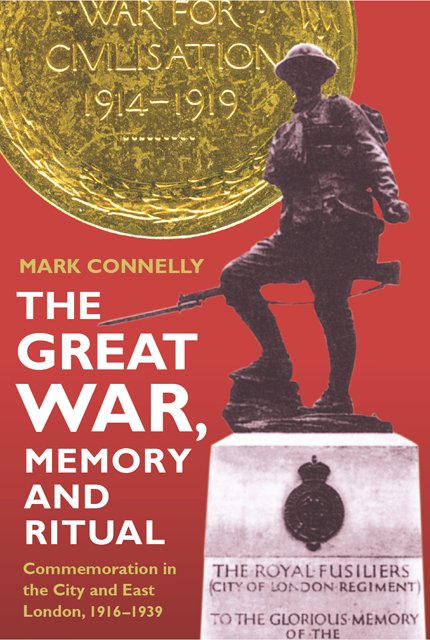6 - Laying the Foundations, 1919-1921
Published online by Cambridge University Press: 22 March 2023
Summary
The Great War ended on 11 November 1918, the news was greeted with a day of wild, unrestrained rejoicing.
How, then, did the anniversary of the Armistice take on a sombre, respectable form, observed with religious zeal and dedication? Did Armistice Day have any direct antecedents?
Even before the end of the conflict there was speculation on how to commemorate the dead. Throughout the war the anniversary of Britain's entry into the conflict, 4 August, hadbeen treatedas a day of solemn prayer and reflection. In August 1918 the City of London journal, the City Press, stated its belief that the date would remain important long after victory had been achieved. The editor assured his readers that ‘a Day of Remembrance there will always be'.
But it was the unforgetable poignancy of the eleventh hour of the eleventh day of the eleventh month that was to stick in people's minds. The commemoration of the first anniversary of the Armistice, in 1919, was largely at the instigation of King George V. His secretary told him that South Africa had observed a daily two minutes silence since 1916. This idea caught the king's imagination and he requested such a silence on 11 November.
It was enthusiastically received in the City, where reaction was the most crucial: if the demands of business were subdued once, and a popular desire to remember expressed, then a potent precedent would be established. Proof that the captains of commerce were willing to acquiesce in marking the anniversary can be seen in the reaction of the general purposes committee of the Stock Exchange. This met on 10 November 1919 and noted that the king hadsuggested a silence at eleven o'clock. It was agreedthat a gong wouldbe sounded in the main hall at eleven and at two minutes past the assembled crowd would sing the National Anthem.
On the day itself the response of the public was overwhelming. The Daily Chronicle recorded the effect of the silence on the boys of the City of London School:
simultaneously in this temple of learning on the Embankment all instruction ceased. In 22 class rooms 22 masters a moment before had been imparting knowledge to 730 boys. Now pens no longer scratched, youthful brows unpuckeredas problems were thrust aside, and the voice of authority stopped abruptly.
- Type
- Chapter
- Information
- The Great War, Memory and RitualCommemoration in the City and East London, 1916-1939, pp. 139 - 149Publisher: Boydell & BrewerPrint publication year: 2001

